
ASIA HUNDREDS is a series of interviews and conference presentations by professionals with whom the Japan Foundation Asia Center works through its many cultural projects.
By sharing the words of key figures in the arts and cultures in both English and Japanese and archiving the "present" moments of Asia, we hope to further generate cultural exchange within and among the regions.
Independent films in the Philippines and Indonesia – Making films and crossing borders
Yuko Sekiguchi (hereinafter Sekiguchi): Could you tell us briefly about your background?
Bradley Liew (hereinafter Liew) : I was born in Malaysia, and I moved to the Philippines in my early 20s because I fell in love with my wife Bianca Balbuena, who is also my producer. I stayed in the Philippines because the film industry there provided me with lots of opportunities to tell the story that I wanted to tell. It helped me find my voice in cinema. Now I am a director, but I also produce films. I have been producing Lav Diaz's films and also works of young, first time filmmakers, not only in Malaysia and the Philippines but all across Southeast Asia. Recently we started co-producing a film by Vietnamese director Pham Ngoc Lan who participated in Talents Tokyo 2017.
Sekiguchi: Where did you discover the film language?
Liew: Growing up in Malaysia, I had little access to world cinema and independent cinema with the scene dominated by American cinema. So my knowledge of cinema was limited until 2012 when I participated in the Asian Film Academy*1 in Busan and encountered independent films from Asia and other parts of the world. After I moved to the Philippines, my eyes were opened to world cinema, especially to the independent cinema from Southeast Asia. For instance, when I was on Lav Diaz's film production team, I observed his style and philosophy, learning and absorbing what I could to come up with my own voice, my own way of telling stories.
*1 A film education program hosted by Busan International Film Festival and Busan Film Commission. It was launched in 2005 with the objective of training young filmmakers and building networks. To date, 338 filmmakers from 32 countries have participated in their program.
Asian Film Academy Official Website
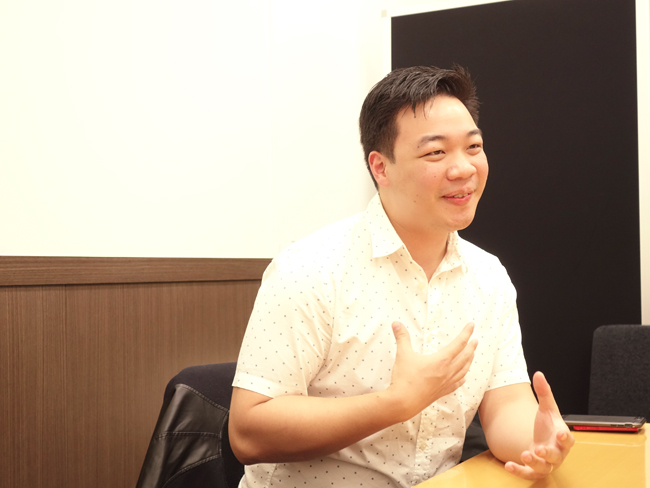
Sekiguchi: That's interesting. I would like to ask the same for Mr. Yosep Anggi Noen. How did you come up with your style of filmmaking?
Yosep Anggi Noen (hereinafter Noen): I was not a film major; I studied communication and media in the Faculty of Social and Political Sciences at Gadjah Mada University, the oldest university in Indonesia. The end of the Suharto regime in 1998 opened up the media industry and created opportunities for film production and screening. Freed from restrictions, new filmmaking communities sprung up across the country. I basically grew up in this era, and so for me, film is a kind of euphoria. Before the reform, we had a small film industry that showed horror films and Hollywood blockbusters with little diversity. In the Suharto era, we had to go to the council of censorship and submit our scripts if we wanted to make films, so it was an immense change for us to gain freedom.
The digital era arrived at the same time, and the film industry blossomed. This was when I also started to make films. The first foreign film or so-called art film that I watched was Akira Kurosawa's Dream (1990), in which Martin Scorsese appears as an actor. I watched it on a pirated DVD.
Sekiguchi: Speaking of Kurosawa, the beginning of your film Science of Fictions reminded me Akira Kurosawa's Rashomon (1950).
Noen: In Indonesia at the time, we could only watch such films on pirated DVDs, which I often rented. I watched Akira Kurosawa and Yasujiro Ozu this way. Recently I also watched Shion Sono and Shunji Iwai, but art films are still not widely available. In rental DVD stores in Indonesia, pretty much all the discs are pirated.
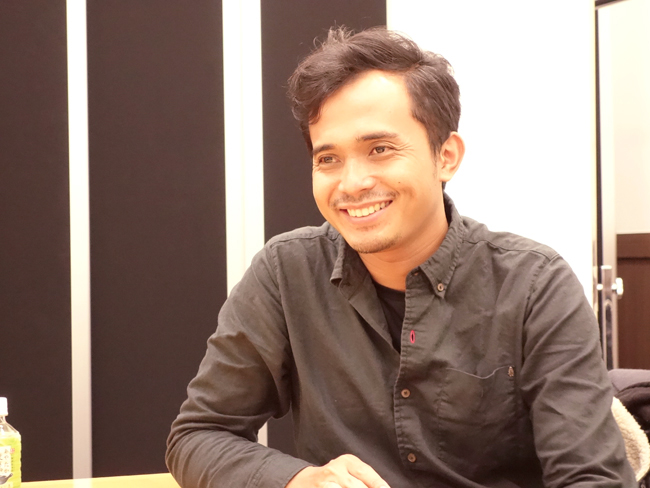
Sekiguchi: In both the Philippines and Indonesia, Hollywood blockbusters are dominant in the share of screening for big cinema chains. I think that makes conditions very difficult for independent films and art films in terms of production as well as screening.
Noen: As for independent films in Indonesia, we have many short film filmmakers and a lot of short films being made. These directors usually belong to a production company and make their living shooting company profile videos and such. Their short films usually do not meet the standards of the international market, and I think that is because these directors have very limited chances to see quality films. So even though there are many short films being made, the quality is poor, and neither experimental works nor works that cross genres and boundaries are being made.
Sekiguchi: In the Philippines, film festivals such as the Metro Manila Film Festival and the Cinemalaya Philippine Independent Film Festival support the production and screening of domestic films, and films screened in these festivals are frequently introduced to Japan. There was a kind of Philippine cinema boom in Japan a few years ago. I imagine that these independent cinema in the Philippines are attracting fans who are willing to watch them in Japan and other parts of the world.
Liew: I think Philippine cinema, specifically feature films, has done very well internationally on the film festival circuit. But the real problem is distribution inside the country and quality control. Since these films are expected to generate a return in investment or otherwise directors won't be funded for the next project, screening domestically is challenging.
The Cinemalaya film festival provides seed money to filmmakers, usually 20,000 US Dollars per project. That is of course not enough, and one would normally apply to various grants for additional funding. The seed money is only the basic start-up fund, but many of the filmmakers who receive them use up the whole amount in production. They often give little thought to distribution or to recoup their expenses, and don't find other sponsors to secure a bigger budget. As a result, their films become mediocre and don't meet their full potential. They could have been better with additional funding. It's true that some of these independent films enjoy a certain cult following among the younger generation. But that is only a very small portion. In the Philippines, more than 80% of the population live below the middle class, and they tend to save their money to spend on Hollywood blockbusters, commercial films, or romantic comedies. So independent films don't survive in a normal distribution sense. There is a lot of output, but locals don't choose to watch them.
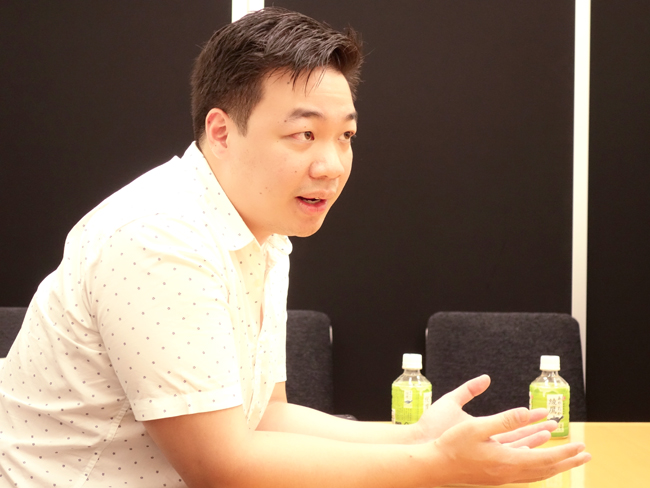
Sekiguchi: How can you solve this issue?
Liew: Thinking from a producer's point of view, I think there needs to be a certain evolution in the way we tell stories, in the form or language of films. The majority of the audience for independent films are younger people like college students, who think that watching independent films is cool, a trendy thing to do. They are also the generation of SNS, like Facebook, and have the shortest attention span. So, they shy away from classics like Akira Kurosawa or films that are 3-4 hours long. But somehow they are fine with Star Wars. They are just following a trend.
One possibility for evolution in response to this is for films to become more hybrid. I think that these young audiences of independent films are seeking something beyond what we have now. They want an alternative and edgy film that can also provide satisfaction and comfort like a commercial film. They are seeking an alternative independent cinema.
Sekiguchi: That must be more difficult than it sounds. But in Bradley's Motel Acacia (2019), I sensed the attempt to present a new form of film. The issue of immigrants is addressed at the base, but at the same time, the storyline progresses unpredictably, like a thrilling horror or a Sci-fi movie. The film has all the elements of human drama, too; and I thought that your core theme was addressed visually with careful calculation, without limiting the film to a single genre.
Liew: I hope the audiences feel the same, especially the mainstream Filipino audience.
Sekiguchi: Is my interpretation of the construction of the film correct?
Liew: Yes. The first idea of Motel Acacia came from genre, and the idea was to make a monster film. We knew from our past experiences that we couldn't, nor did we want to, just make a commercially successful product – for example a typical monster film that people come to the theater to watch, laugh, cry, feel emotionally released and go home. We wanted a commercial film with artistic elements. Balancing the two sides was almost like gambling.
Starting from the financing and planning stage, it took us four years to complete this film, and we had to take some risks along the way. The film is financed by a big studio in the Philippines, and we will see if there will be a return for their investment after it is theatrically released in the Philippines next year.
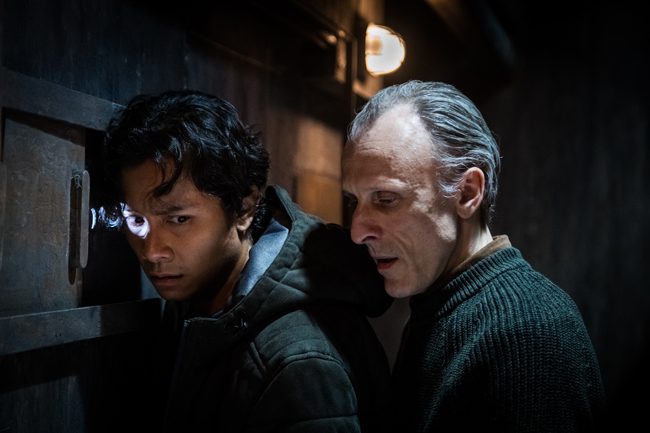
(C) Picture Tree International
Sekiguchi: I felt the same thing for Yosep's Science of Fictions (2019). The film provides mystic visions and political commentary. The situation of the main character living in a spaceship with a refrigerator's door is so intriguing. I found the film to be artistic and yet highly entertaining.
Noen: I started this film with a very small idea. What if "x" happened, or someone witnessed "x," in this town with a beautiful beach on the south side of Yogyakarta where I live. I had this scene in mind as I wrote the script.
During the cold war in the 60s, the United States and USSR raced to set foot on the moon, and in Indonesia there was a bloody coup. The 60s was one of the most important times in our country and in world history. How can I connect everything and incorporate it into a film, using film language, technique, and form? "Man landing on the moon" was a big political event. How should I portray in the film a man who witnessed this event and got traumatized by it, his neighbors and their village? The film is by intention political and very complex, and I remember after watching the film Bradley came to me and said: "How did you convince the investor to make such a complex film?" (laugh) One might call it an "eccentric film."
Liew: I also said that it was wonderfully directed! (laugh)
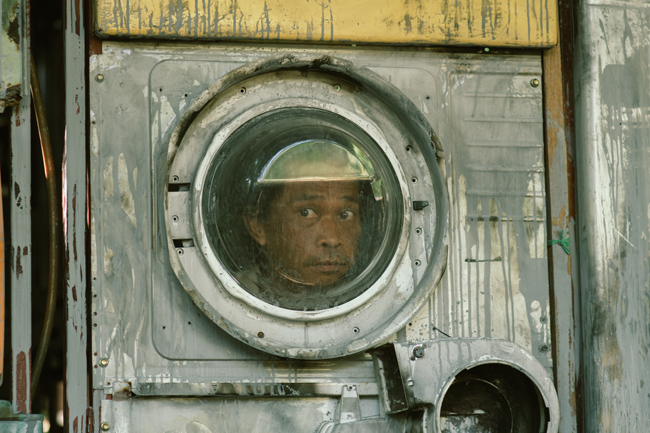
(C) Rediance
Sekiguchi: Yes, there is a part of filmmaking in which filmmakers entrust the story to the actors. Casting is one part of directing. Actors may have a kind of charm that completes the story. In your story, the main character (played by Gunawan Maryanto) who cuts off his tongue has a humanity which charms and pulls the audience into the film. How did you cast the main actor?
Noen: This man witnesses something bigger than himself, something political, and one thing he does in order to express that physically is to choose not to speak. In the film he is not a protagonist, but a witness, and the surrounding situation is portrayed through him. People in the village mock him. He knows the truth, but those around him do not understand that. They see him as a crazy person and continuously make fun of him. In order to play the role of this character who cannot speak, body language was essential. I needed somebody who could physically express what I wanted to explain. I cast Gunawan Maryanto, who is a stage performer, because he could tell a story with his body movements. That is why I chose him.






